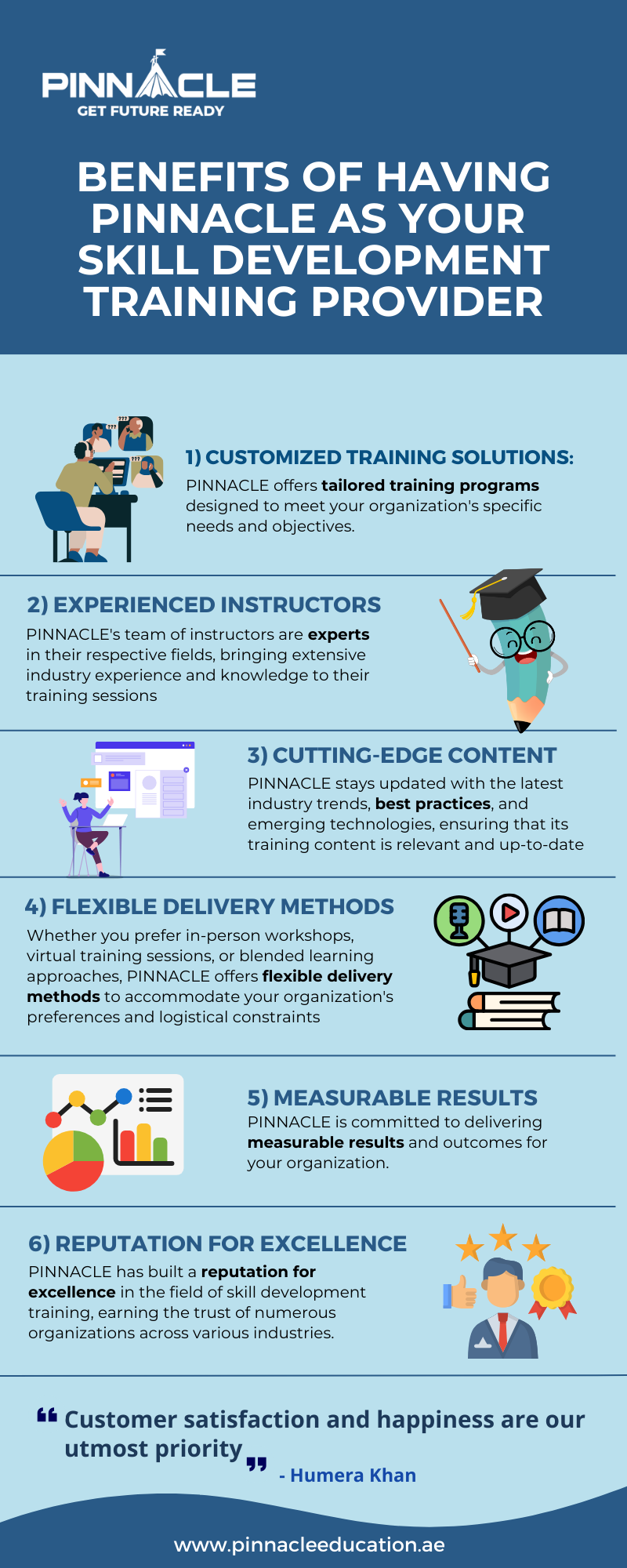How to Invest in Learning and Development and take advantage of learning opportunities to acquire new skills and knowledge?
Investing in learning and development and taking advantage of learning opportunities to acquire new skills and knowledge is essential for personal and professional growth. Here are some strategies to help you effectively invest in learning and development:
1. Identify Learning Goals: Clarify your learning objectives and identify the skills and knowledge you want to acquire or improve. Consider your career aspirations, current job responsibilities, and areas where you need to develop expertise.
2. Assess Learning Needs: Conduct a self-assessment or seek feedback from supervisors, mentors, or colleagues to identify your learning needs and areas for improvement. Evaluate gaps in your skills, knowledge, and competencies to prioritize learning opportunities.
3.Explore Various Learning Resources: Take advantage of a variety of learning resources and formats, including:
- Formal Education: Enroll in courses or certification programs in PINNACLE.
- Online Learning Platforms: Utilize online platforms .
- Workshops and Seminars: Attend our workshops, seminars, conferences, and industry events to gain insights, learn from experts,
- On-the-Job Training: Take advantage of opportunities for hands-on learning, job shadowing, cross-training, or mentoring within your organization.
At PINNACLE, we also offer a diverse range of training programs and workshops to meet the evolving needs of professionals in various industries. Explore our courses today to embark on your journey of continuous learning and development.
4. Create a Learning Plan: Develop a structured learning plan that outlines your learning goals, desired outcomes, and specific actions you will take to achieve them. Break down your learning objectives into manageable steps and set deadlines to keep yourself accountable.
5. Allocate Time and Resources: Prioritize learning by allocating dedicated time and resources for learning and development activities. Schedule regular blocks of time in your calendar for studying, attending classes, or participating in training sessions.
6. Seek Support and Guidance: Seek support from supervisors, mentors, or learning professionals who can provide guidance, advice, and recommendations for learning opportunities. Collaborate with peers or join study groups to share knowledge, exchange ideas, and support each other’s learning journey.
7. Stay Curious and Open-minded: Cultivate a curious mindset and remain open to exploring new ideas, concepts, and perspectives. Be proactive in seeking out learning opportunities and experimenting with different approaches to learning.
8. Apply Learning in Practice: Actively apply newly acquired skills and knowledge in real-world situations to reinforce learning and gain practical experience.
9. Reflect and Evaluate Progress: Regularly reflect on your learning progress, achievements, and areas for improvement. Evaluate the effectiveness of your learning strategies and adjust your approach as needed to stay on track toward your learning goals.
10. Continuously Adapt and Evolve: Stay agile and adaptable in your learning journey by embracing change, seeking feedback, and continuously updating your skills and knowledge to keep pace with evolving trends and technologies.
By following these strategies and committing to lifelong learning and development, you can effectively invest in your personal and professional growth, acquire new skills and knowledge, and advance your career or business aspirations.
What are the benefits of having PINNACLE for your Training needs?
Choosing PINNACLE as your Skill Development Training Provider can bring many benefits to you. Some of them are below
Customized Training Solutions: PINNACLE offers tailored training programs designed to meet your organization’s specific needs and objectives. Whether you require technical skills development, leadership training, or industry-specific workshops, PINNACLE can create customized solutions to address your unique requirements.
Experienced Instructors: PINNACLE’s team of instructors are experts in their respective fields, bringing extensive industry experience and knowledge to their training sessions. They provide valuable insights, practical advice, and real-world examples, enhancing the learning experience for participants.
Cutting-Edge Content: PINNACLE stays updated with the latest industry trends, best practices, and emerging technologies, ensuring that its training content is relevant and up-to-date. Participants receive training on the most current tools, methodologies, and techniques, keeping them ahead of the curve in their respective fields.
Flexible Delivery Methods: Whether you prefer in-person workshops, virtual training sessions, or blended learning approaches, PINNACLE offers flexible delivery methods to accommodate your organization’s preferences and logistical constraints. This flexibility ensures that training can be easily integrated into employees’ schedules without disrupting daily operations.
Measurable Results: PINNACLE is committed to delivering measurable results and outcomes for your organization. Through pre-training assessments, progress tracking, and post-training evaluations, they measure the effectiveness of their programs and provide valuable insights into participants’ learning and development.
Reputation for Excellence: PINNACLE has built a reputation for excellence in the field of skill development training, earning the trust of numerous organizations across various industries. By choosing PINNACLE as your training provider, you benefit from its reputation for quality, reliability, and customer satisfaction.
Overall, partnering with PINNACLE as your Skill Development Training Provider can empower your organization to unlock the full potential of your workforce, drive innovation, and achieve sustainable growth and success in today’s competitive business landscape.



